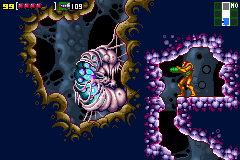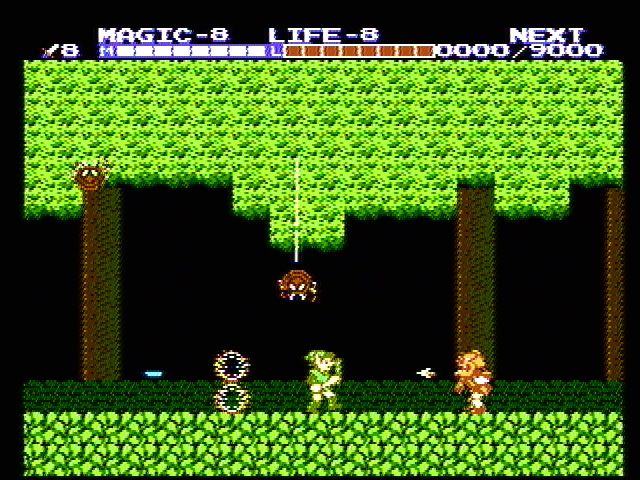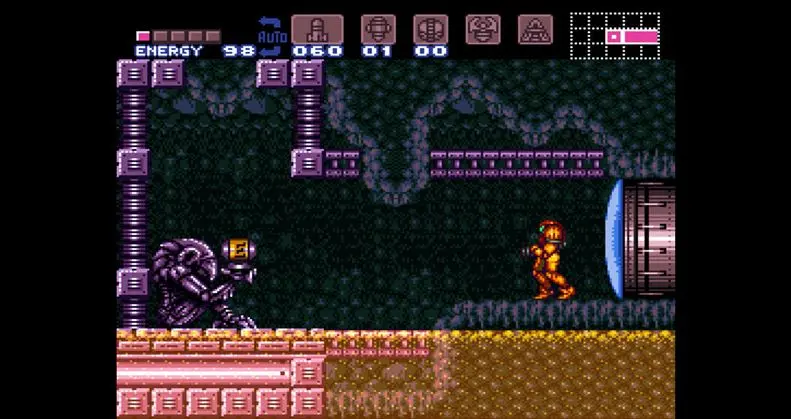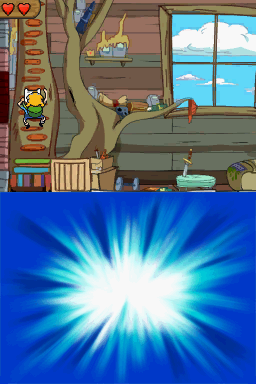Results
Metroid Prime 2: Echoes
shooter, sci-fi, challenging
Metroid Prime 2: Echoes, released in 2004 for the Nintendo GameCube, is a first-person adventure game that builds upon its predecessor while introducing several unique elements: 1. Dual-world mechanics: The game features Light and Dark versions of the planet Aether, with players switching between dimensions to solve puzzles and progress. 2. Beam system: Unlike the first Metroid Prime, beams don't stack. Instead, players must switch between four distinct beams (Power, Dark, Light, and Annihilator) for combat and puzzle-solving. 3. Ammunition: Dark and Light beams use limited ammo, adding a resource management aspect to combat. 4. Enhanced scanning: The scan visor now includes a zoom function for distant objects and provides more lore through Luminoth and Space Pirate logs. 5. Increased difficulty: Generally considered more challenging than its predecessor, with tougher bosses and environmental hazards. 6. Multiplayer mode: A first for the series, featuring deathmatch-style combat for up to four players. 7. Dark Samus: Introduces a new antagonist, a corrupted Phazon-based doppelganger of Samus. 8. Suits: Features the Dark Suit and Light Suit, which provide protection against dimensional hazards. 9. New abilities: Introduces the Screw Attack, Sonic Boom, and Echo Visor. 10. Atmosphere: Emphasizes isolation and a darker tone compared to the first Metroid Prime. The game's unique dimension-shifting mechanics and challenging gameplay make it stand out within the Metroid Prime trilogy.
Metroid: Samus Returns
sci-fi, environmental puzzles, challenging
Metroid: Samus Returns is a critically acclaimed reimagining and remake of the 1991 Game Boy classic Metroid II: Return of Samus, developed by MercurySteam and Nintendo for the Nintendo 3DS. Here are some key details about the game: Gameplay and Mechanics: - Retains the 2D side-scrolling exploration and combat of classic Metroid games, but with updated mechanics and controls. - Introduces the "Melee Counter" system, allowing Samus to counterattack enemies by precisely timing her melee strikes. - Incorporates free-aim mode, allowing Samus to aim her arm cannon in any direction while standing still. - Features a revised map system with a separate map screen and the ability to place markers. Level Design and Environments: - Takes place on the planet SR388, the setting of the original Metroid II. - Reimagines and expands upon the game's environments, adding new areas and intricate level designs. - Incorporates various biomes, from lush jungle regions to treacherous caverns and depths. - Features meticulously crafted 2.5D graphics, with detailed backgrounds and foregrounds. Narrative and Storytelling: - Retells the story of Samus' mission to exterminate the Metroid species on SR388. - Expands on the narrative through cutscenes and environmental storytelling. - Introduces new AI entities, such as the Metroid-scanning robots, that shed light on the planet's history. Overall, Metroid: Samus Returns aimed to recapture the essence of classic Metroid gameplay while introducing modern refinements and enhancements, resulting in a well-received and critically acclaimed addition to the long-running series.
Metroid Prime
shooter, sci-fi, environmental puzzles
Metroid Prime (2002) is a groundbreaking entry in the Metroid series, developed by Retro Studios for the Nintendo GameCube. It successfully translated the traditionally 2D side-scrolling series into a first-person 3D adventure while maintaining the core elements of exploration, isolation, and gradual power progression. Key aspects of Metroid Prime include: 1. Visor system: Players can switch between different visors, including the Scan Visor, which provides lore and tactical information about the environment and enemies. 2. Beam weapons: The game features multiple beam types that are not only used in combat but also for solving puzzles and accessing new areas. 3. Interconnected world: Tallon IV is designed as a seamless, interconnected environment with backtracking and shortcuts that unlock as you gain new abilities. 4. Environmental storytelling: Much of the plot and backstory is conveyed through scan logs and visual cues in the environment, rather than traditional cutscenes. 5. Unique boss designs: Bosses often require specific strategies and use of different visors or weapons to defeat. 6. Atmospheric soundtrack: The game features an ambient, electronic score that adapts to different areas and situations. 7. Morph Ball mechanics: The series' signature Morph Ball is seamlessly integrated into the first-person perspective, with unique puzzle elements. 8. Sequence breaking: The game allows for skilled players to obtain items out of the intended order, enabling speedrunning and alternative playthroughs. 9. Metroid Prime Fusion Suit: Connecting the game to the Game Boy Advance's Metroid Fusion unlocks a special suit based on Samus' appearance in that game. 10. Log book completion: The game encourages thorough exploration by tracking scanned items in a completion percentage, separate from item collection. Metroid Prime is often praised for its immersive gameplay, attention to detail, and how it successfully reimagined the Metroid formula in 3D without losing the essence of the series.
Metroid Prime 3: Corruption
shooter, sci-fi, challenging
Metroid Prime 3: Corruption is the final installment in the Metroid Prime trilogy, released in 2007 for the Nintendo Wii. It builds upon the mechanics of its predecessors: 1. Motion controls: The game fully utilizes the Wii Remote and Nunchuk for aiming, shooting, and environmental interaction, offering a more immersive experience. 2. Multiple planets: Unlike previous entries, players can explore different planets, each with unique environments and challenges. 3. Hypermode: A new combat mechanic that allows Samus to enter a powered-up state at the cost of health, adding risk-reward gameplay. 4. PED Suit: Samus's new Phazon Enhancement Device suit enables her to harness Phazon energy, tying into the corruption storyline. 5. Ship commands: Players can now call Samus's gunship for air strikes, transportation, and puzzle-solving. 6. NPC interactions: The game features more dialogue and character interactions than previous entries, expanding the narrative scope. 7. Corruption mechanic: As the story progresses, Samus becomes increasingly corrupted by Phazon, affecting gameplay and driving the plot. 8. Boss battles: Includes dynamic, multi-stage encounters that often involve environmental interaction and unique defeat conditions. 9. Scanning: The scan visor returns with additional features, including the ability to hack certain objects and systems. 10. New beam weapons: Introduces the Nova Beam and Grapple Voltage, adding variety to combat and puzzle-solving. The game concludes the Phazon storyline and ties together narrative threads from the previous Prime games, serving as a culmination of the subseries.
Metroid Fusion
sci-fi, pixel art, challenging
Metroid Fusion (2002) for the Game Boy Advance was a significant departure from the traditionally open-ended exploration of previous Metroid games. Developed by Nintendo R&D1 and produced by Yoshio Sakamoto, the game introduced a more linear and story-driven approach to the series. The narrative follows Samus Aran, who is infected by an X Parasite during a mission and must undergo surgery to save her life. This process also infuses her with Metroid DNA, altering her Power Suit's appearance and abilities. The story unfolds on the Biosphere Research Station, where Samus must navigate the claustrophobic environments while being guided by a computer AI named Adam, who was once her commanding officer. The game featured a more streamlined progression system, with abilities and upgrades often handed to the player through plot events rather than being hidden throughout the environment. Navigation was also more straightforward, with Adam providing explicit instructions on where to go next, removing much of the exploration and backtracking that defined earlier Metroid games. Fusion features the Scanner Visor, which allows Samus to scan objects and enemies for lore and data entries, further emphasizing the game's narrative focus. The gameplay also features a heightened sense of tension and horror elements, with the X Parasites serving as deadly and relentless enemies that can assume various forms. Despite its departure from the series' conventions, Metroid Fusion was praised for its polished gameplay, challenging boss battles, and atmospheric environments. The game's linear structure and narrative focus were divisive among fans, but it remains a significant entry in the Metroid canon, offering a unique and more narrative-driven experience within the franchise.
Metroid Dread
sci-fi, platformer, interconnected world
Metroid Dread is a 2D side-scrolling action-adventure game developed by MercurySteam and Nintendo EPD, released exclusively for the Nintendo Switch in 2021. It is the first original 2D Metroid game in 19 years, serving as a direct sequel to Metroid Fusion (2002). As a veteran of the genre, you'll appreciate that Metroid Dread maintains the core exploration-based gameplay and ability progression that defines the Metroidvania subgenre. The game introduces several new mechanics to the series: 1. E.M.M.I. zones: Areas patrolled by nearly indestructible robots, creating tense stealth sequences. 2. Free aim and melee counter: Refined from Metroid: Samus Returns (2017), allowing for more precise combat. 3. Slide and Spider Magnet: New movement options that expand traversal possibilities. 4. Phantom Cloak: A temporary invisibility ability used primarily for stealth. 5. Flash Shift: A short-range teleport useful in both exploration and combat. The game takes place on the planet ZDR and continues the narrative thread involving the X Parasites and Chozo lore. It's noted for its challenging boss encounters and the tension created by the E.M.M.I. pursuit sequences. Metroid Dread received critical acclaim for its gameplay refinements, atmosphere, and how it concludes the mainline 2D Metroid storyline while introducing new elements to the series formula.
Metroid: Zero Mission
sci-fi, pixel art, challenging
Metroid: Zero Mission is a remake and reimagining of the original 1986 Metroid game for the Nintendo Entertainment System. Developed by Nintendo R&D1 and released for the Game Boy Advance in 2004, Zero Mission serves as a comprehensive update to the classic title, featuring enhanced graphics, improved gameplay mechanics, and a significant expansion of the original game's narrative and level design. One of the standout features of Zero Mission is its attention to detail in preserving the essence of the original Metroid while introducing modern sensibilities. The game maintains the iconic exploration-based gameplay and power-up acquisition that defined the series, but refines it with more fluid controls, updated physics, and a more intuitive user interface. Zero Mission's level design is a highlight, seamlessly blending the classic areas from the NES game with entirely new sections that expand the scope and depth of the adventure. These additions include new boss battles, hidden areas, and intricate sequences that test the player's platforming and combat skills. The game also features a dedicated stealth segment, where players must navigate past the deadlySpace Pirate forces without the aid of Samus Aran's powerful armaments. The game's narrative is significantly expanded, introducing a prologue that delves into Samus's backstory and her initial confrontation with the Space Pirates on Planet Zebes. This segment serves as a tutorial area, gradually reintroducing players to Samus's abilities and the game's mechanics. Additionally, Zero Mission features an extended epilogue that ties into the events of the subsequent Metroid games, providing a more cohesive narrative continuity within the series. Zero Mission's presentation is a notable improvement over the original, with vibrant graphics that capture the essence of the Metroid aesthetic while taking advantage of the Game Boy Advance's hardware capabilities. The game features a remixed and enhanced soundtrack that pays homage to the iconic tunes of the NES game while adding new compositions to match the expanded content. Overall, Metroid: Zero Mission is widely regarded as one of the best remakes in gaming history, striking a perfect balance between honoring the source material and introducing modern enhancements that elevate the experience for both newcomers and seasoned fans of the Metroid series.
Zelda II: The Adventure of Link
fantasy, pixel art, challenging
Zelda II: The Adventure of Link (1987) for the Nintendo Entertainment System was a notable departure from the top-down, dungeon-exploring formula of its predecessor, The Legend of Zelda. Instead, it adopted a side-scrolling action-adventure approach, with a greater emphasis on combat and role-playing elements. One of the game's most distinctive features was its combat system, which incorporated a diverse array of techniques, including downward thrusts, upward strikes, and even magic spells. Link's repertoire of moves could be expanded by visiting townsfolk who taught new skills, adding depth and variety to the combat encounters. The game's overworld was divided into two distinct perspectives: a side-scrolling view for exploring the expansive outdoors and battling enemies, and a top-down view for navigating towns and dungeons. This hybrid approach allowed for a more dynamic and varied gameplay experience. Zelda II also introduced a comprehensive experience and leveling system, where Link could increase his attack power, magic ability, and life points by defeating enemies and accumulating experience points. This RPG-like progression system was a novel concept for the series and added a sense of character growth and development. The game's narrative followed Link's quest to awaken the sleeping Princess Zelda from a curse by collecting the pieces of the Triforce of Courage. This journey took him through diverse environments, including deserts, swamps, and palaces, each with its own set of challenges and enemies. Despite its ambitious design and notable departures from the original, Zelda II: The Adventure of Link received a mixed reception upon its release, with some praising its depth and innovation, while others criticized its high difficulty level and departure from the series' roots. Nonetheless, it remains a significant entry in the Zelda franchise, showcasing Nintendo's willingness to experiment with established formulas and push the boundaries of the action-adventure genre.
Super Metroid
platformer, environmental puzzles, sci-fi
Super Metroid, released in 1994 for the Super Nintendo Entertainment System, is widely regarded as one of the greatest and most influential games in the Metroidvania genre. Here's a detailed description, assuming you're familiar with the genre conventions: 1. Nonlinear Exploration: Super Metroid's world, the planet Zebes, is a vast, interconnected labyrinth that encourages backtracking and sequence-breaking. As you acquire new abilities and upgrades, previously inaccessible areas become available, creating a sense of exploration and discovery. 2. Atmosphere and Environmental Storytelling: The game excels in creating an immersive and eerie atmosphere through its visual design, sound effects, and minimal dialogue. The environments themselves tell a story, with the remnants of civilizations and encounters with various lifeforms adding depth to the world. 3. Power-up Progression: Samus Aran's progression is tightly linked to the acquisition of new abilities, such as the Grappling Beam, Space Jump, and Plasma Beam. These upgrades not only enhance combat capabilities but also open up new traversal possibilities, encouraging revisiting previous areas. 4. Boss Battles and Sequence Breaking: Super Metroid features memorable boss encounters, each with unique strategies and patterns to master. Additionally, the game allows for sequence breaking, where skilled players can access areas and acquire upgrades out of the intended order, adding replayability and challenge. 5. Speed Running and Sequence Breaking: The game's design lends itself well to speed running and sequence breaking, with dedicated communities exploring intricate glitches and techniques to complete the game in record times or with self-imposed challenges. 6. Minimalist HUD and Storytelling: Super Metroid's HUD is minimal, allowing the game's visuals to take center stage. The story is conveyed through environmental cues and cutscenes, leaving much to the player's interpretation and fostering a sense of mystery. 7. Fluid and Responsive Controls: Samus Aran's movement and combat mechanics are praised for their fluidity and responsiveness, contributing to a satisfying gameplay experience that rewards skilled execution. Super Metroid is widely celebrated for its masterful level design, atmospheric world-building, and the sense of isolation and exploration it evokes, setting a benchmark for the Metroidvania genre that many games still strive to emulate.
Adventure Time: Hey Ice King! Why'd You Steal Our Garbage?
fantasy, environmental puzzles, bright visuals
"Adventure Time: Hey Ice King! Why'd You Steal Our Garbage?" is a 3D platformer game developed by WayForward Technologies and published by D3Publisher for the Nintendo 3DS and Nintendo DS in 2012. The game is based on the popular Cartoon Network animated series "Adventure Time." The game's story follows the antics of the Ice King, who has stolen various items from the Land of Ooo, including garbage from the Tree Fort belonging to Finn and Jake. As Finn and Jake, players must navigate through various levels and environments, collecting the stolen items and battling against the Ice King's minions. One unique aspect of the game is its use of the 3DS and DS's dual-screen functionality. The top screen displays the main gameplay action, while the bottom screen serves as a map and inventory screen. Players can also use the touch screen to interact with certain objects and puzzles. The game features a mix of platforming, puzzle-solving, and combat mechanics. Players can use Finn's sword and Jake's stretchy powers to overcome obstacles and defeat enemies. The game also incorporates elements of exploration, as players can uncover hidden areas and collectibles throughout the levels. "Hey Ice King! Why'd You Steal Our Garbage?" features a distinctive art style that faithfully captures the quirky and whimsical aesthetic of the "Adventure Time" show. The game's levels are based on various locations from the series, such as the Candy Kingdom, the Ice Kingdom, and the Land of the Dead. While the game received generally positive reviews for its faithful adaptation of the source material and its charming visual style, some critiques noted that the gameplay mechanics could be repetitive at times and that the overall experience was relatively short. Overall, "Adventure Time: Hey Ice King! Why'd You Steal Our Garbage?" is a solid tie-in game that captures the essence of the beloved animated series, offering fans a chance to experience the Land of Ooo in an interactive and engaging way.
Filters
Search Term
Properties
Platforms
Tags (include)
Tags (exclude)
Get Your Game Noticed
Advertise your game with MetroidvaniaDB and reach a community of people who know exactly what they're looking for:
Your game.
Native & Banner Ad Spots
Multi-week Discounts
Game Launch Packages
Discounts for Indie Developers

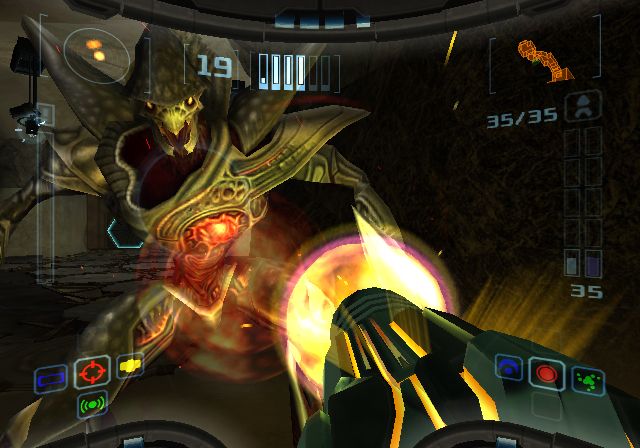
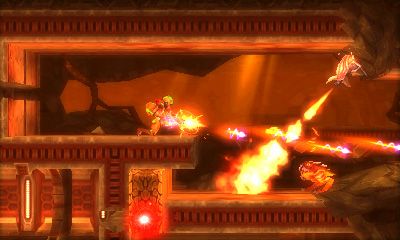
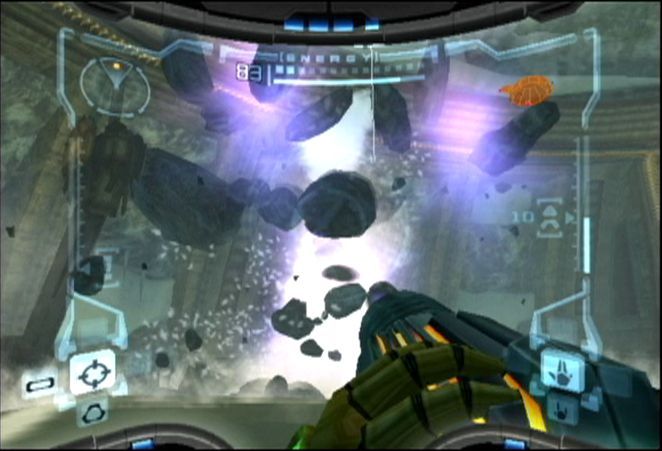
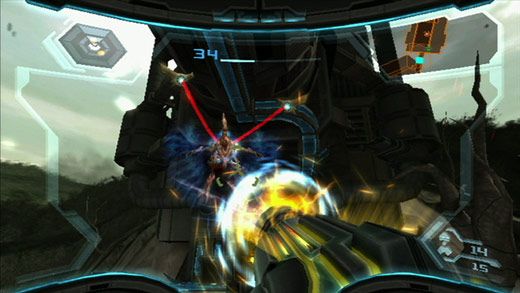
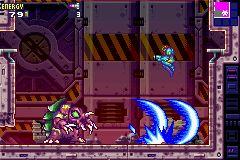
.jpg?alt=media&token=e864da57-13d0-4a4c-8041-52329e7e4ce1)
